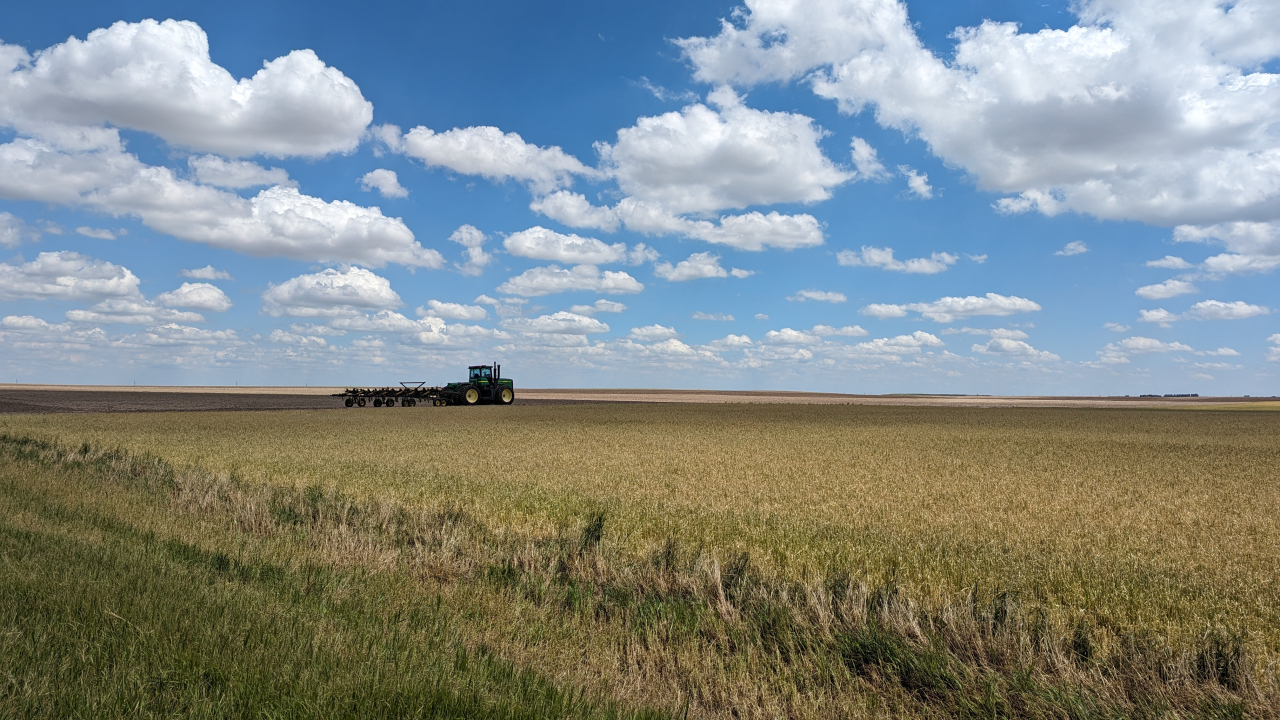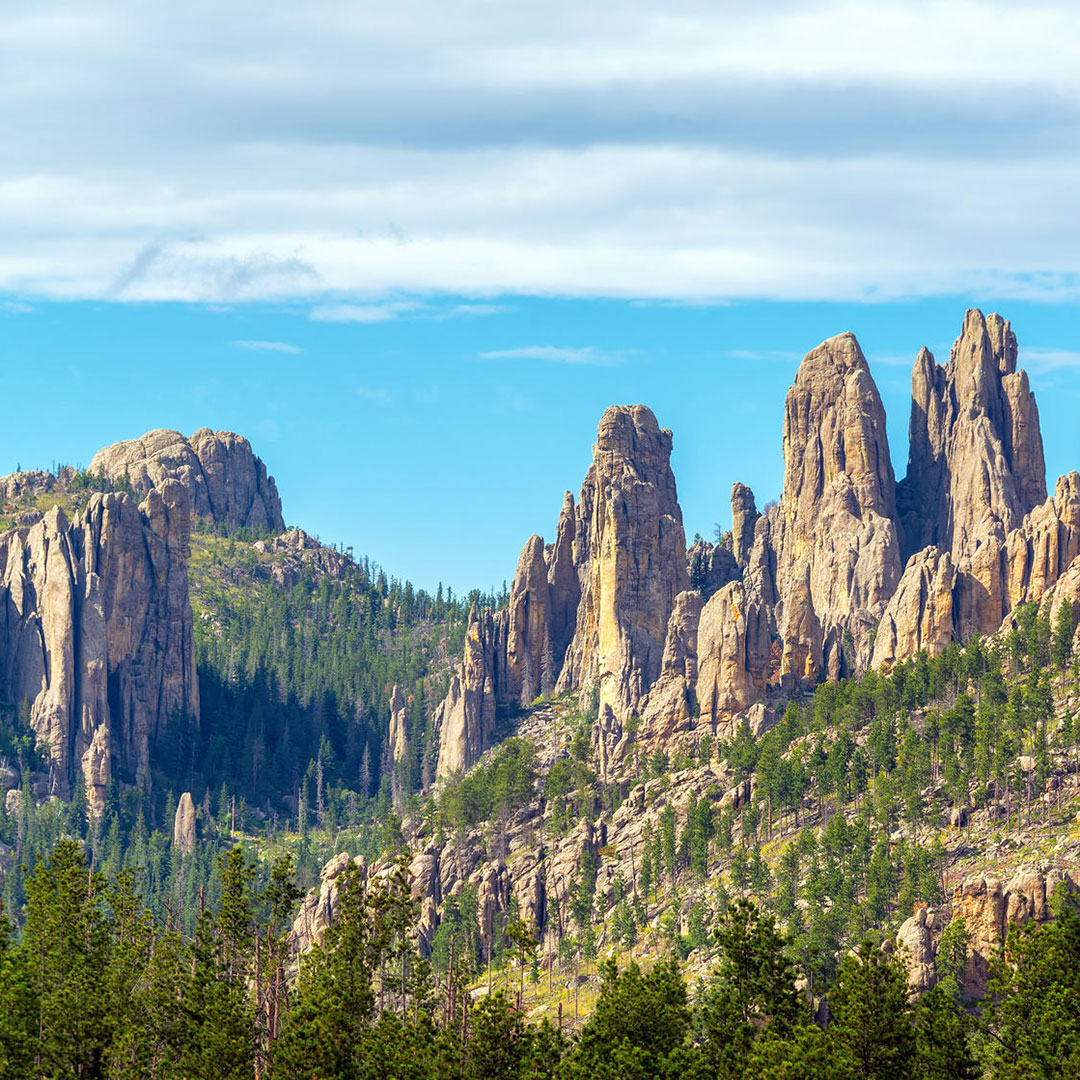Plains, Trains, and Bicyclobiles
The Great Plains of North America are an area encompassing 13 states and three Canadian provinces, making up over a third of the contiguous United States.

The region is characterized by dramatic weather, including blizzards, sweltering heat, devastating winds, and tornadoes. American bison used to rule these lands until they were hunted to near extinction, though they’re making a comeback, particularly in the north. In our modern times, the land is now dominated by wheat, corn, soybeans, and hay.

The southern half of the Great Plains were the setting for the famed cattle drives of the late 1800s. Texas had cattle, but Kansas had railroads. The simplest solution was to walk the cattle from Texas to Kansas, herded by cowboys on horseback. The cattle drive era ended when railroads finally arrived in Texas.
Just weeks ago, the good folks at Bikepacking Roots published the brand-new Great Plains Gravel Route. Similar to the Great Divide and the Western Wildlands, the Great Plains Route is mostly unpaved and stretches from Mexico to Canada, one/two states (respectively) farther east. The Great Plains crosses six states: Texas, Oklahoma, Kansas, Nebraska, South Dakota, and North Dakota.

While the Great Plains don’t have the epic extremes of the western states, a strong effort was made to showcase the best scenery the area has to offer. Each state’s segment was assigned to a home state connoisseur who went out of their way to include top-notch local gravel routes. The result is a serpentine path an impressive 3,500 miles long - 30% farther than both the Great Divide and the Western Wildlands!
Highlights along the way include Texas’s Caprock Canyon, the Flint Hills of Kansas, the Black Hills of South Dakota, and Theodore Roosevelt National Park in North Dakota.

While Bikepacking Roots urges riders to “avoid [Texas in] summer at all costs,” my school calendar leaves me no choice but to wait until May 24 to take a train to El Paso, which will arrive on May 25. My strategy is to cover big miles right out of the gate, in order to get as far north as possible before it gets any hotter.
If Amtrak ran at least one train each day, I could leave May 23 instead. If freight actually gave right-of-way to passenger rail - which is required by law, but never happens in practice - I could arrive the same day I departed. Instead, the whole summer will be two days later (aka hotter).
The Great Plains Route begins in Presidio, TX, a small border town near Big Bend National Park. The nearest Amtrak station is in Alpine, TX, a full day’s ride northeast. To complete the entire route, it would be necessary to deboard in Alpine, spend a day riding south to Presidio, then another whole day backtracking to Alpine. But I’m not that lucky.
As it turns out, passengers cannot retrieve checked bags in Alpine. That includes bikes. If you want to get off in Alpine, you can only do so with a carry-on. Instead, I’ll have to continue to El Paso, then spend three days riding back the way I came, go to Presidio, and finally back to Alpine, where the train stopped four days prior.
If Amtrak ran once per day, had its right-of-way enforced, and allowed people to retrieve checked bags at every stop, it would save five days.
Compared to last year’s Pony Express ride, the Great Plains will be nearly 2,000 km longer and significantly hotter. The largest hills will be smaller, but perhaps surprisingly, the hills will be more consistent. I’m using the same bike, with nearly the same packing list, and it actually weighs a bit more, though I feel like I’m getting a lot in exchange for only about another 0.3 kg of mass (clipless pedals, full tent).
As usual, I’ve outfitted Teeder with a new chain, cassette, and tires. Since there aren’t any mountain ranges, the new gearing is a bit higher all-around. In training rides, I’m almost exclusively in my top three gears (out of 11). Using gears with more teeth and staying closer to the mid-range should noticeably improve mechanical efficiency and reduce wear. The new tires are also less “chunky,” which should have them rolling a bit smoother. All together, there’s a reasonable chance I’m saving 20-30 watts (roughly 12-20% of what I’m even capable of generating), only by changing a few parts, at a cost of about $150.
Perhaps most importantly, by going north in the plains states during summer, I should have tailwind more often than not.
I’m optimistically aiming for finishing in six weeks, which would require a pace of roughly 150 km/day - faster than I’ve ever averaged before. The hope is that the lack of mountains and consistent tailwind will make that possible. Compared to last year, my training regimen has been a bit stiffer, and I also weigh a little less, more than making up for Teeder’s extra weight.
At the time of this writing, there’s one day left of school. I’ve been training 20+ hours/week. I’ve got a one-way ticket to El Paso. Teeder’s rocking a new drivetrain. My hair is blue.

Let’s rock.



 June
June

